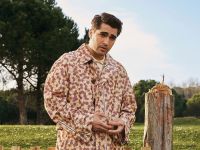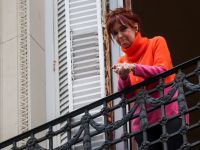Pierre Buyoya, who twice seized power in Burundi in military coups, was himself toppled by the army on Wednesday, state radio said.
Buyoya's rule appeared to have come to an end while he is out of the country after an unknown soldier announced on the radio that the government had been "suspended" as shots were heard in the capital Bujumbura.
A coup in July 1996 brought Buyoya, previously president from 1987 to 1993, back to power and in June 1998, he announced a transitional constitution and was sworn in as interim president.
The 1996 coup was the second time in a decade that he had seized Burundi's presidency, leading a revolt by the Tutsi-led army to oust the Hutu incumbent Sylvestre Ntibantunganya.
A career army officer who first grabbed power in 1987 at the age of 38, Buyoya belongs to the Tutsi minority which controls the tiny central African nation's army.
He led the country until he lost power in 1993 in the country's first multi-party presidential elections.
Born on November 24, 1949 into a poor farming family in Rotovu in the south of Burundi, Buyoya began his military career after a receiving a primary education at a Roman Catholic primary school in Rotovu, followed by schooling in Brussels.
From 1967 to 1975, he attended the Royal Cadet School in the Belgian capital followed by the Royal Military Academy, where he simultaneously followed a university course in social sciences.
In 1979, Buyoya joined the central committee of the Unity for National Progress (UPRONA), at the time Burundi's sole party.
In September 1984, he was attached to Burundian Army's headquarters. He was a popular figure in the army, with a reputation for rigour and determination.
In September 1987 he seized power for the first time, overthrowing President Jean-Baptiste Bagaza, another Tutsi officer.
He became the head of a Committee for National Salvation, and was designated president on September six days later, vowing to "build a modern Burundi" with "profound changes."
However, apart from adopting a more liberal approach to religious freedom, his regime differed little from that of his predecessor, and was still faced with the problem of the majority Hutu population's claim for a greater role in conducting the divisive nation's affairs.
However, following the reciprocal massacres of Hutus and Tutsis in August 1988 in northern Burundi, in which an estimated 20,000 people died, Buyoya created the Commission for National Unity and appointed a majority Hutu government.
He also decreed that the two ethnic groups be equally represented within the central committee of UPRONA.
Buyoya took Burundi on its first step towards multi-party democracy, holding the first pluralist presidential elections in June 1993, but was heavily defeated by Melchior Ndadye, the country's first elected Hutu president -- PARIS (AFP)
© 2001 Al Bawaba (www.albawaba.com)







